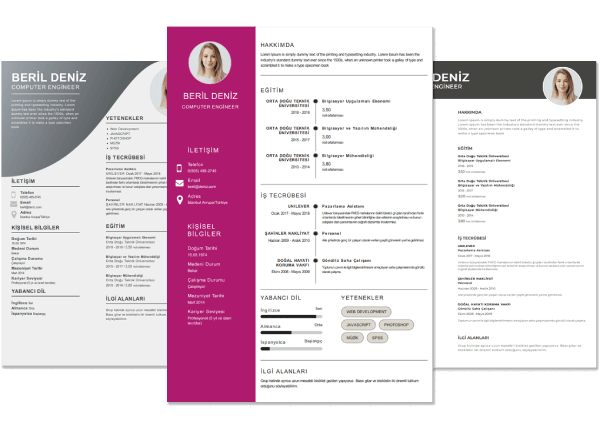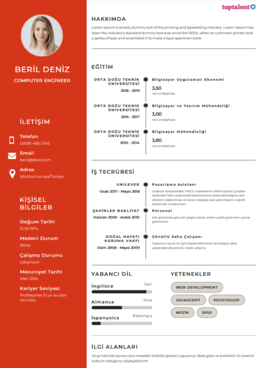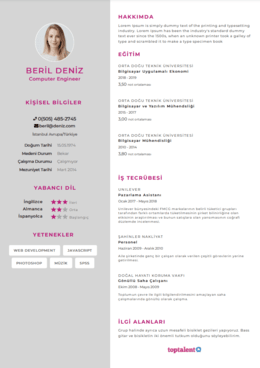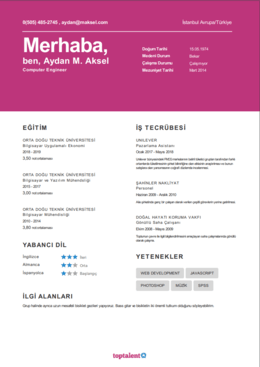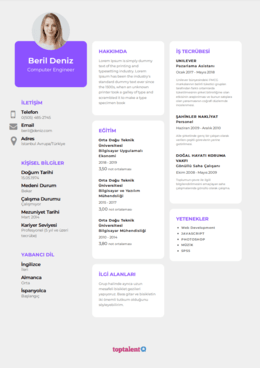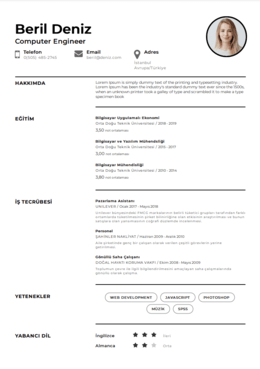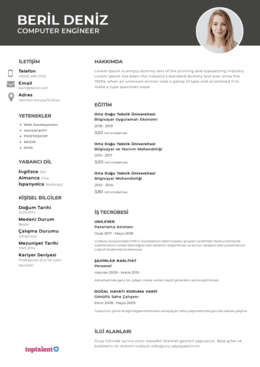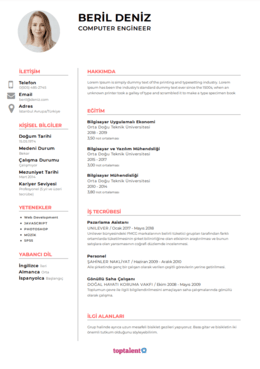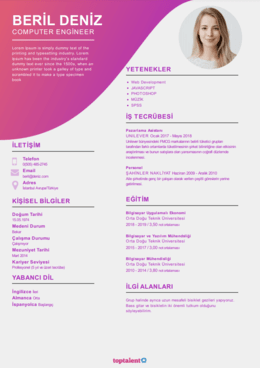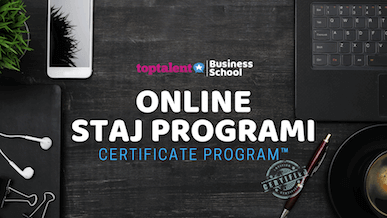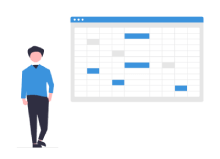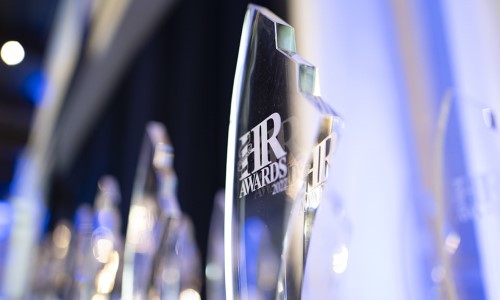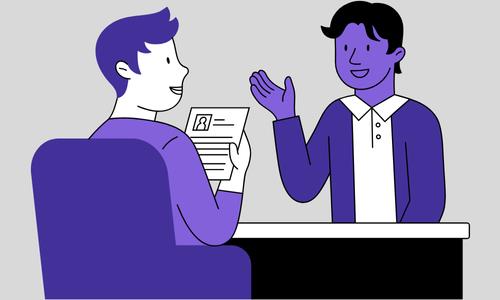Resume Help Zeynep İclal Akçakoca
What Does the Best Resume Look Like in 2022
Yeni CV örneklerini inceleWe all use appearance to make judgments, let's face it. And hiring managers and recruiters are not any different. Just as crucial as dressing professionally for a job interview is sending in a résumé that looks excellent.
The appropriate resume's appearance and substance are a comfort to the recruiter.
This manual will demonstrate:
- What a resume should look like based on current hiring criteria.
- You can utilize these practical suggestions and techniques to have the most attractive resume possible.
- Extra resources for resume design that will help yours stand out like Cindy Crawford at a Dunkin' Donuts.
Start by comparing these two radically different resumes.
The information is identical. The one on the left, though, has a modern feel to it. And to make matters worse, there were some amateurish layout errors.
The one to the right? That is the ideal format for a resume.
Proper Resume Formatting and Design
Let's look at what America's top association of professional resume writers has to say about the topic to help you completely realize how important the appearance of your resume is:
"The initial impression must be inviting, attractive and professional. This determination is usually made within just a few seconds, before the reader actually engages the words on the page. The general layout and format of the résumé should invite the reader into the text. If the résumé fails in this first test, chances are the decision-maker won’t go any further."
Official Guidelines, The Professional Association of Résumé Writers and Career Coaches
Your resume should appear as follows:
1. Good font
- Use a typeface that is easy to read. One that is both contemporary and fashionable on the one hand (no Comic Cans), and classy and formal on the other (so no Times New Roman).
- Font sizes should range from 10 to 12 points.
- There are a lot of wise choices. Consider Cambria, Calibri, Helvetica, and Bookman Old Style among other typefaces.
- Feel free to try both serif and sans-serif fonts; they can both look nice on a CV.
- Once you've decided on a typeface, use it across the entire document. If possible, while creating a cover letter for a resume, utilize the same typeface.
2. Evenly-set margins
All four sides of the resume should have one-inch margins.
You can reduce the margin space if you wish to include more information on a single page, but at least half an inch must remain. Look through our resume examples.
3. Consistent line spacing
For all resume parts, use a single or 1.15 line spacing. Place a double space between each entry in your job experience and education sections as well as between each topic.
4. Clear section headings
Section titles should be slightly larger than the body of the text. Typing in ALL CAPS will also help them stand out visually.
5. Enough white space
When examining resumes, recruiters require some breathing room. The contents shouldn't be crammed onto a resume.
How can I tell if a resume has enough white space?
Print it out and take a closer look at it. Do you take up too much space? If so, then it probably is.
6. No graphics, no photos
Fancy visuals may prevent the ATS from scanning your resume.
Photos? Not a date, a job is what you're after. Leave images off of your CV unless they are specifically requested in the job posting (which may be the case for some occupations).
7. Ideally one-page
How long ought a professional resume to be?
Consider one page. Include only information that is pertinent to the job offer for which your CV is intended.
Make every word in your resume count. But—
Don't force it if you think you'll leave out important information by trying to create a one-page resume.
For experienced individuals, a two-page CV is acceptable.
1. Including the Most Important Sections
You now understand the fundamentals of what the ideal CV should look like.
It's time to handle the contents now. Include all the appropriate components in the appropriate sequence as your first step (see What to Include in a Resume).
While the order of the elements on your resume may change based on your professional circumstances, for more than 90% of applicants, it's better to adhere to the conventions of a traditional reverse-chronological resume structure.
Here are the sections that go on a professional resume.
(Click on one of the links below to view a specific tutorial with examples if you want to learn more about how to write each component.)
What Does a Resume Look Like? Standard Template
- With your contact information in the resume heading (remember to include your LinkedIn profile)
- A resume profile is a career objective or a professional description of qualifications.
- working knowledge
- Education
- Skills
- Added Sections (awards, projects, freelance work, certifications, volunteering experience, or hobbies and interests).
3. Bonus Materials and Resume Ideas for a Good-Looking Resume
Right—
The fundamentals of how to make a CV stand out and draw the greatest job offers have been taught to you.
The fact is, sometimes only the bare minimum will do. Your CV should (and can) have a personal touch. It should read and appear just like you.
A CV that is specially created for your industry, work background, and future objectives will look the best on you. No one size fits everyone. The same is true with resume formats and designs.
Here is some more reading that can assist you in producing a CV that stands out and displays your unique style.
Learn more about each of the three categories of resumes first.
- Timeline for a Resume
- Functional Resume
- Dual-purpose resume
Consider it to be a lot to take in? Still not persuaded of the significance of your resume's appearance?
Let's approach this problem from the perspective of first impressions science.
Only 7% of the message we express in real-world, face-to-face interactions is done so through words, according to a UCLA study.
The non-verbal accounts for the remaining 93%.
Utilize this information in your job search:
Yes, the words you use count, but nonverbal cues are just as important.
Keep in mind that it all comes down to what you say and how you say it.
You'll be able to obtain whatever job you put your sights on if you keep that maxim in mind.
Additionally, a strong cover letter that complements your CV will set you apart from other applicants. You can create one using this cover letter builder. Here's what it might resemble:
Key Takeaway
Here is an example of a resume:
- a formal font like Georgia, Cambria, Calibri, or Verdana. 11 to 12 point size
- line spacing of one.
- margins on all four sides of one inch.
- a lot of empty space to give readers room to breathe
- large section headers.
- no flashy graphics
- No pictures.
- includes a professional summary, sections on work history, education, and talents.
- reverse-chronological, functional, or a combination of these is the standard format.
